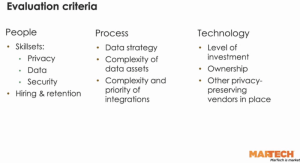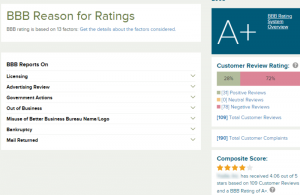Want to know how to turn unorganized data into compelling presentations? Contributor Keri Morgret recaps three SMX Advanced speakers as they share how to transform data into valuable insights.

This session focused on using data-driven storytelling to support and promote paid search marketing campaigns.
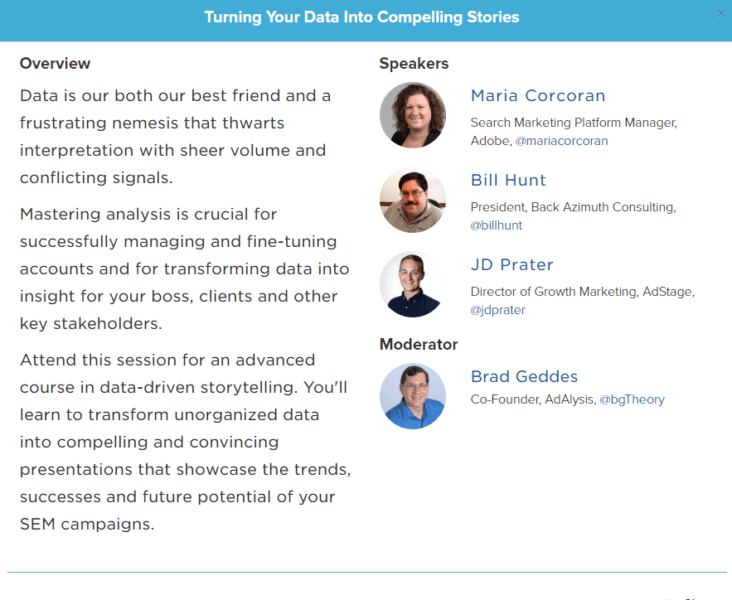
Bill Hunt, Back Azimuth Consulting
Bill started the session by sharing experiences he’s had in trying to sell stories about his data. To be effective in telling stories with your data, the data must be adapted to your audience.
Executives tend to see things one way, and everyone else has the opposite view. Will you be presenting to people who need the big picture, or will you be presenting to people who will be implementing the details of the plan?
When you present the data, it needs to be obvious. You can’t assume that your audience can see your conclusions, and you don’t want to make them do mental math or connect a lot of dots on their own. Be explicit and connect key data points to missed opportunities and revenue.
The data also needs to show something cool and insightful or a business opportunity. In Hunt’s experience, people repeat the brief nuggets of information. Make sure the nuggets they remember and repeat are the ones you want them to remember and that they are appropriate for your audience.
Does the data contradict an existing belief, action or fact? If so, you need to figure out how to present the data so it can help change that belief. You may need to retell the story in a different way.
Your site search data can be a great source of information and data for storytelling, but be careful not to overwhelm people with that data; 600,000 rows of search queries won’t impress your audience — it will scare them instead.
That’s exactly what happened with Bill’s first client example. The client’s marketing team was overwhelmed by the data and how much content they thought would be needed to create answers to 27,000 questions from 600,000 entries.
In the end, they determined 6,500 pieces of content would be needed, which led to questions like “How can we create that much content?” and “Who is going to manage it all?”
On the other side of the hall, the management team was looking at how this data translated into money from a different angle:
- How much revenue can we make if we create this content?
- How fast can we get a return on investment (ROI)?
- Whose revenue will be cannibalized (by users buying online instead of through other channels)?
- How will lost revenue be tracked?
In the end, the two departments came together and determined a smaller amount of content was needed. The marketing team created the content and generated a 22 percent immediate conversion and $10 million in incremental revenue over the next couple of years.
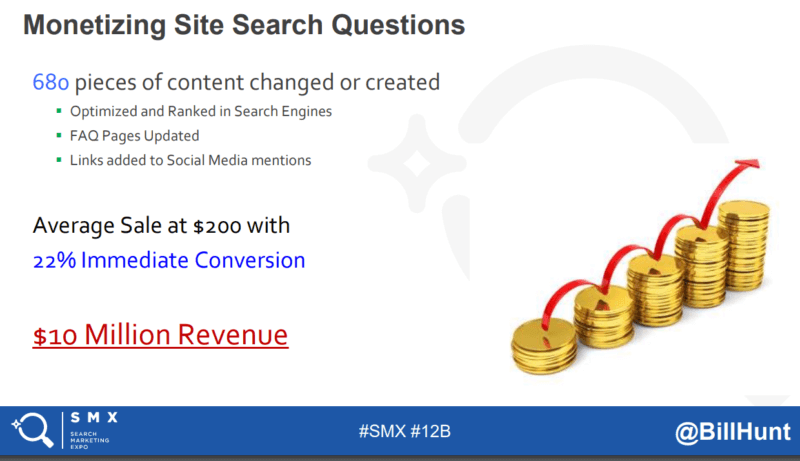
For another client, Bill and his team took a vast amount of data (over a million keywords) and developed a content opportunity matrix.
This client is an alcoholic beverage manufacturer, so many of the searches were related to drinks. The team reviewed the keywords and focused on one segment of customers and their queries.
This segment of customers knew they wanted a drink, but they didn’t know exactly what drink they wanted. They were dubbed the “Cocktail Curious.”

The keywords came from multiple sources such as traffic to the website, site search, Google Search Console, Google Keyword Tool and more. Since there were over a million keywords, and Bill’s staff could not sort through them all, they created a pie chart of drink discovery colors that visually told the story of what people were searching for.
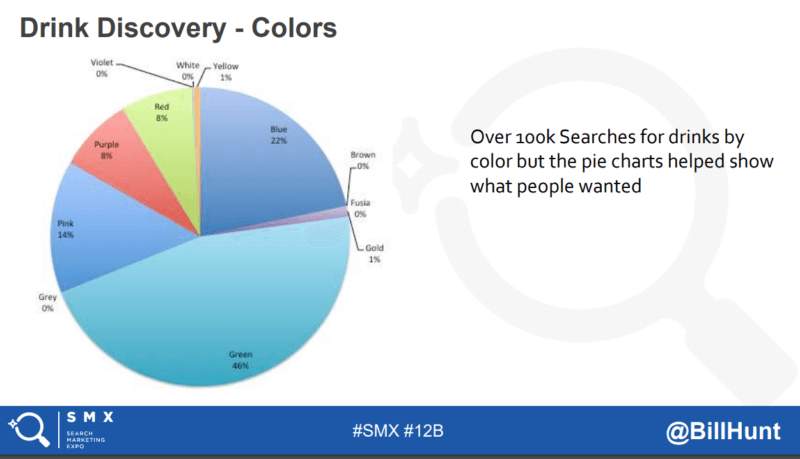
Bill recommends using searcher interest to drive content alignment, ensuring your data stories paint the right picture for the audience and don’t overcomplicate data.
Maria Corcoran, Adobe
Maria addressed two important questions many of us have:
- How do I get my ideas funded?
- How can I use data to get those ideas funded?
Maria is on an in-house team of 32 in operations at Adobe. Her team is focused on knowing where the data is coming from and how to find the data. To be able to analyze the data, you need to understand the data sources.
As a strategist, she wants to know all of the details:
- How much did that click cost?
- What is the customer journey?
- What is the bounce rate for a page?
- What is the customer engagement level?
While the details are good, they will not get your idea funded.
Your ultimate goal is to get the C-suite on your side and happy with your ideas. They’re not looking at the strategist data, they want to see the bottom line.
You need to translate the data you have into what the executives want. They likely want to know revenue, conversion volume and retention. You’ll need to do your research to know what they want, so you can use your data to address what they need to make decisions.
You may have all the data in the world, but you may also only get one slide in a 60-slide presentation to convince the executives of the value of your project.
Below is an example of the one slide she used, with the proprietary company figures removed. You’ll want to keep using the same format for future updates, so people are familiar with your slide and know where to look for the data.
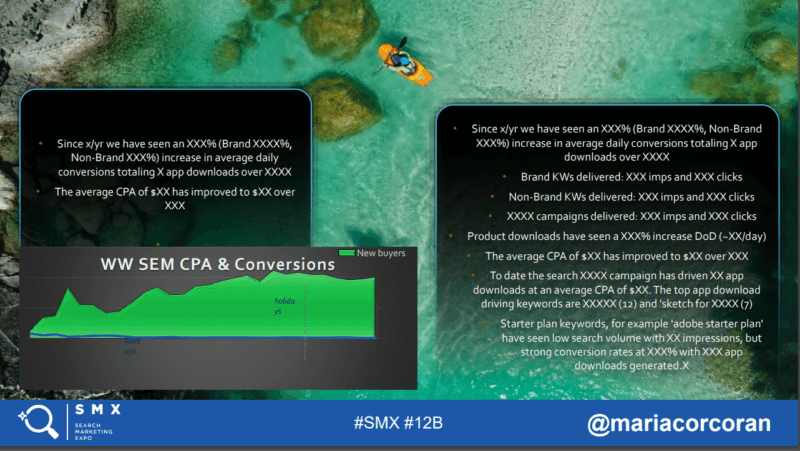
When she gave a report on the success of her projects, she removed a lot of the detailed data and kept a very high-level “we did what we said we were going to do for you” report for the executives. She focused on using visualizations, concise data points (but not overwhelming amounts) and looking at “what’s next.”
Maria’s #SMXInsights:
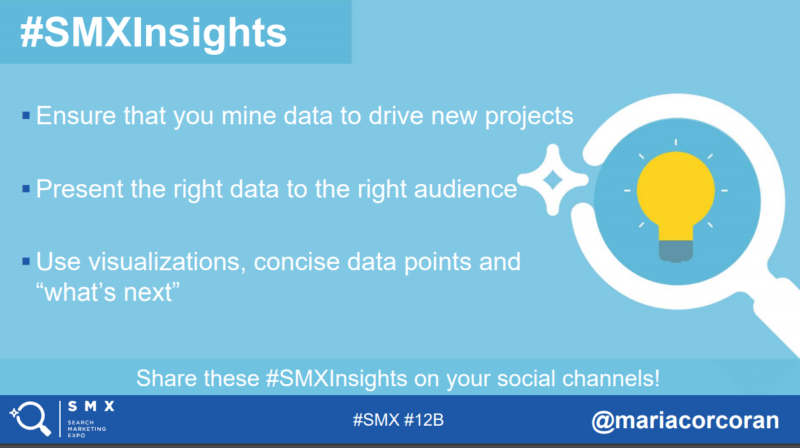
Presentation deck: Telling compelling stories with data – Get your ideas funded!
JD Prater, AdStage
JD kicked off his session by saying you shouldn’t make your reports so long and detailed that you’re the only one in the room who cares about the data. You don’t want to drive people away. Instead, JD asks us to think of reports like an ad.
How do you present the right metrics, for the right audience, in the right context? Structure your PPC reports for Chief Marketing Officers (CMOs), directors and managers, and give each a unique report.
You need to present your report so it can influence decisions. Data is past tense and should be used to influence what happens in the future.
CMOs
What does the CMO care about the most? Money! Why should you talk about click-through rate? You’re one line item in a whole array of things they need to look at.
We usually tell a long story that ends with a recommendation. You should instead start with the end recommendation, then work backward as needed.
The Minto structure of leading with the answer, giving a supporting argument, then giving the evidence of the argument can be great here. Sometimes you start with the answer, the CMO says yes, and you’re done!
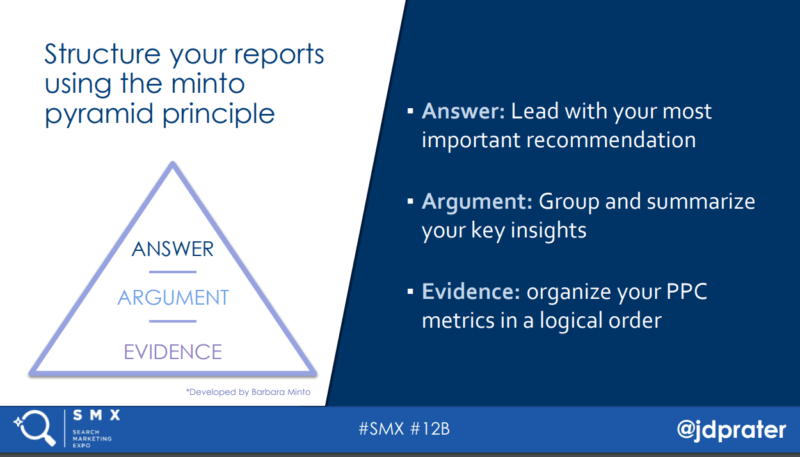
Directors
Directors use the contribution of your PPC campaign to the lead pipeline as their primary marketing performance metric. Start your presentation to them with how well you’ve done, and how much better you could be doing with X, Y and Z. Then back up your data. Avoid spreadsheets!
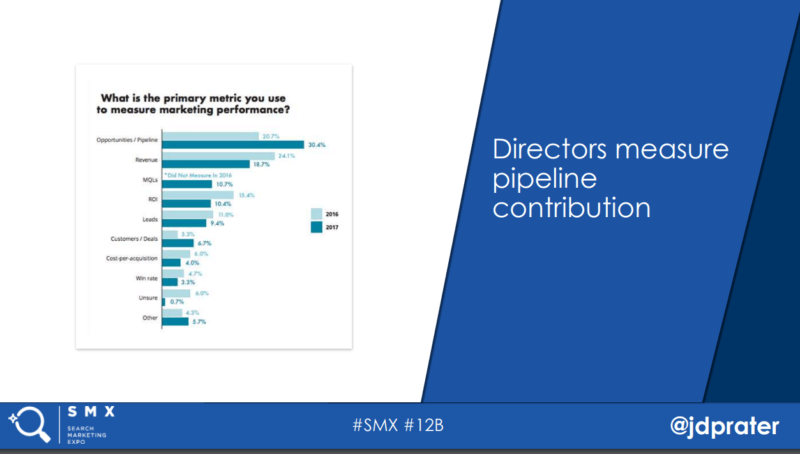
Managers
With managers, put your most important information first, then show trends, and show how this can affect the future plans. Here is where you want to include the details, break things down to the ad and campaign level.
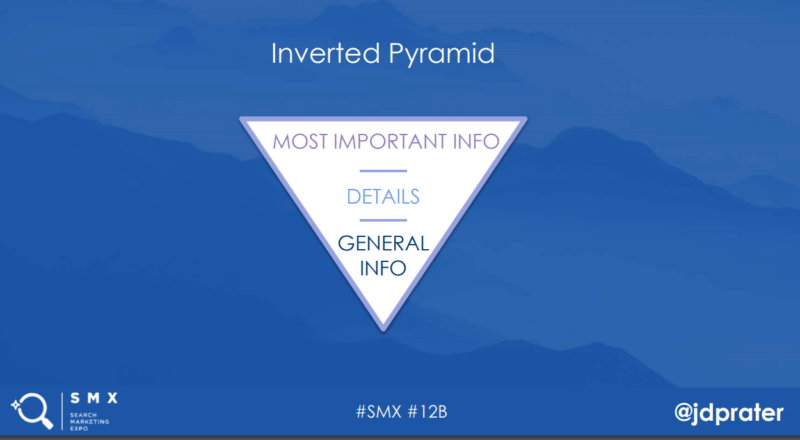
JD’s #SMXInsights:
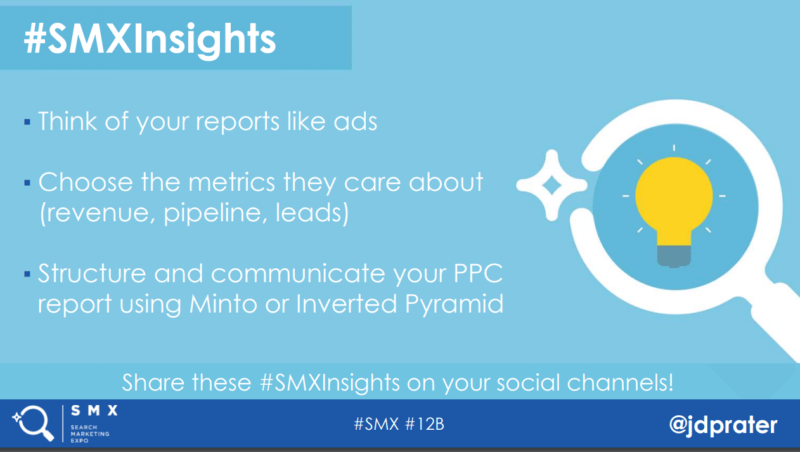
Presentation deck: Paid search reports to influence business decisions
Want more info on Paid Search? Check out our comprehensive PPC Guide – nine chapters covering everything from account setup to automation and bid adjustments!
Opinions expressed in this article are those of the guest author and not necessarily Marketing Land. Staff authors are listed here.
Marketing Land – Internet Marketing News, Strategies & Tips
(76)
Report Post


